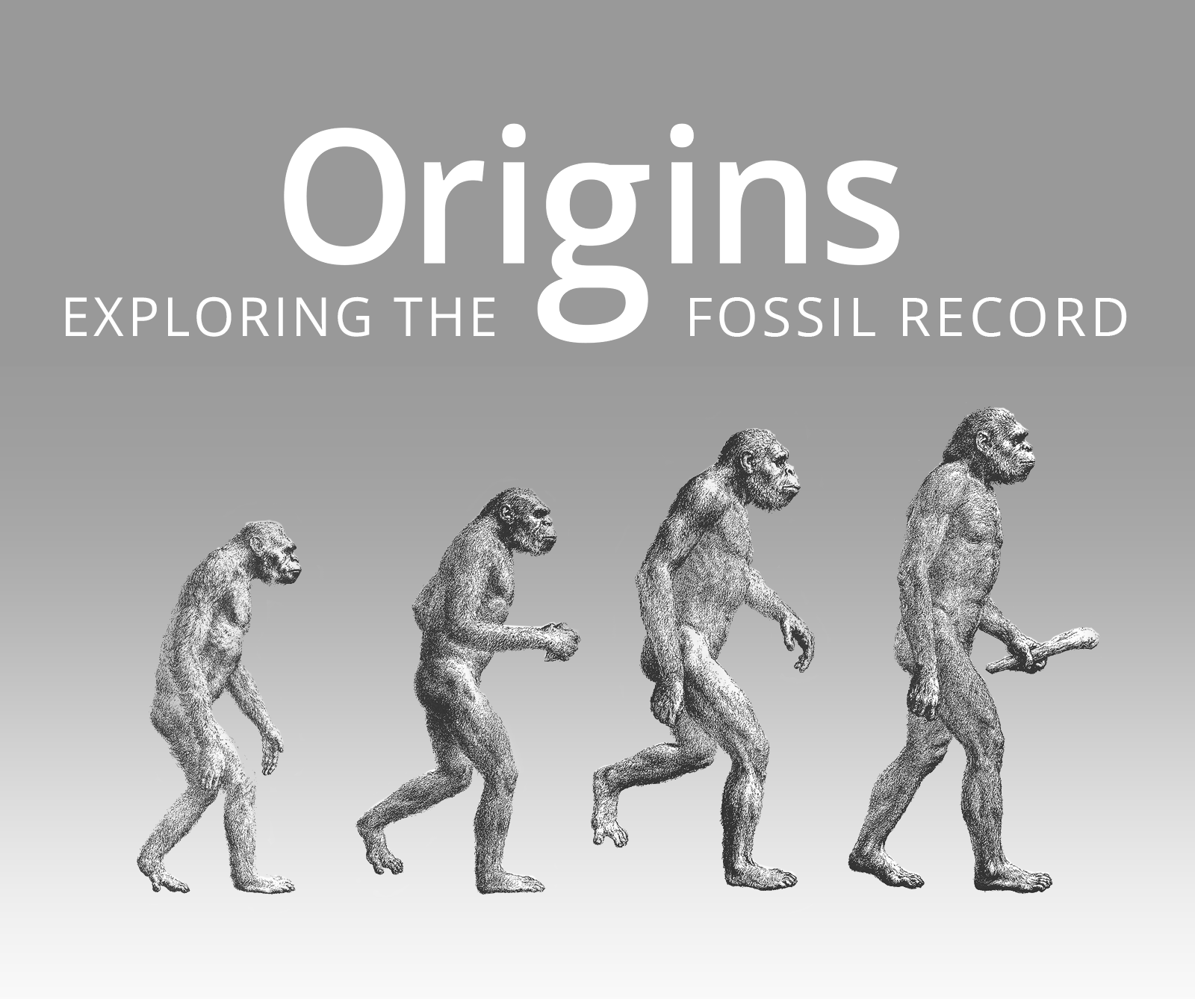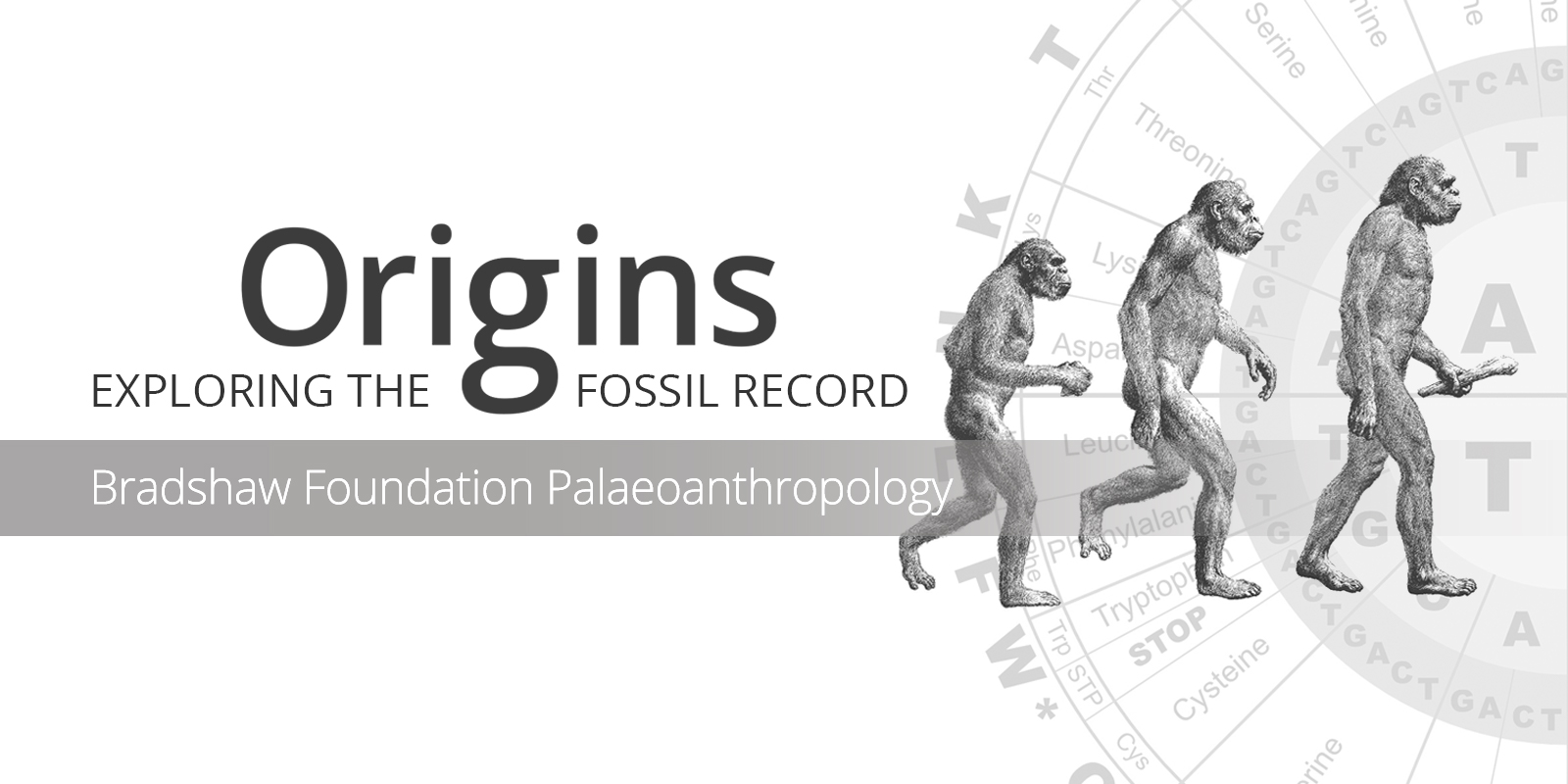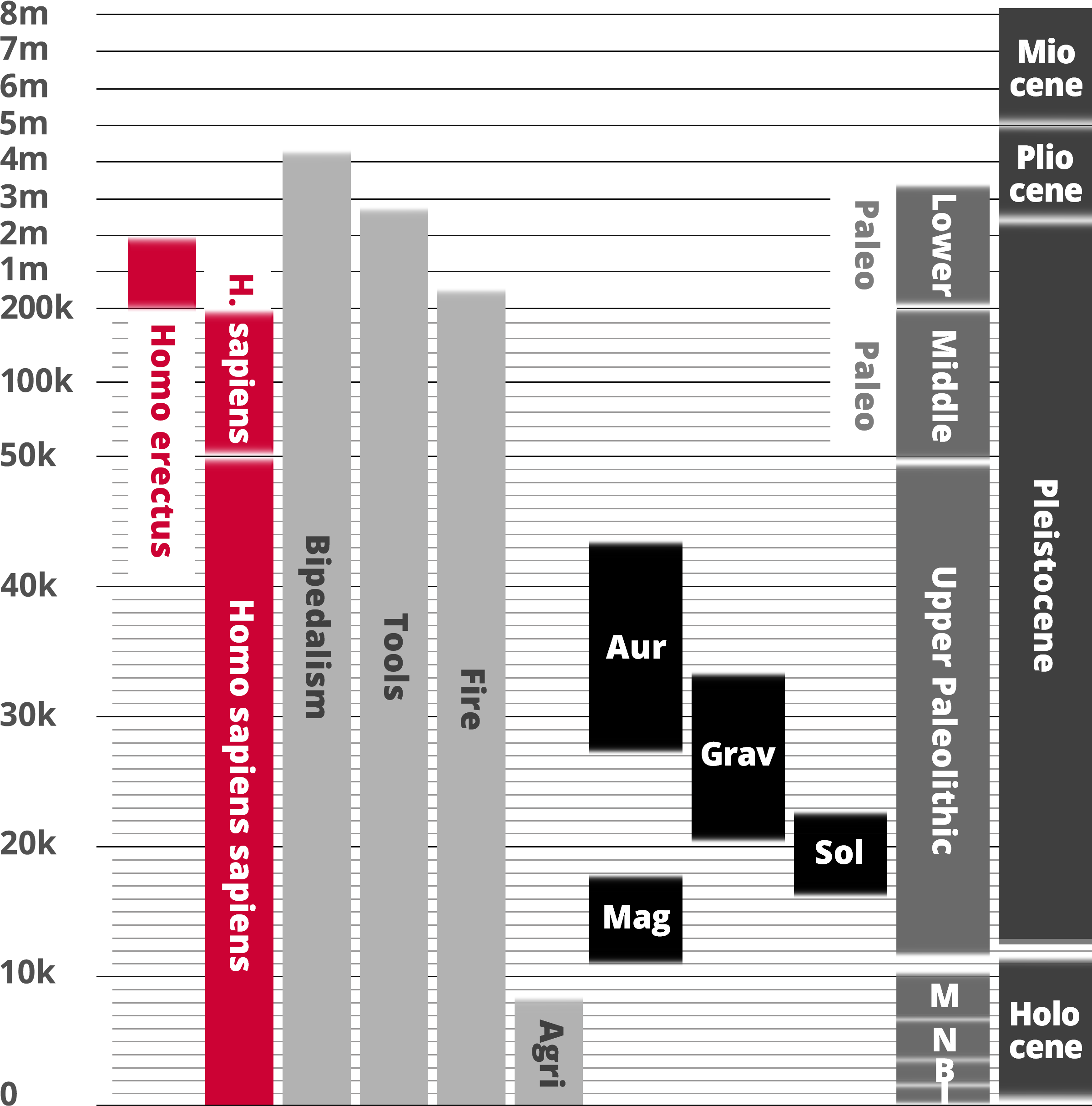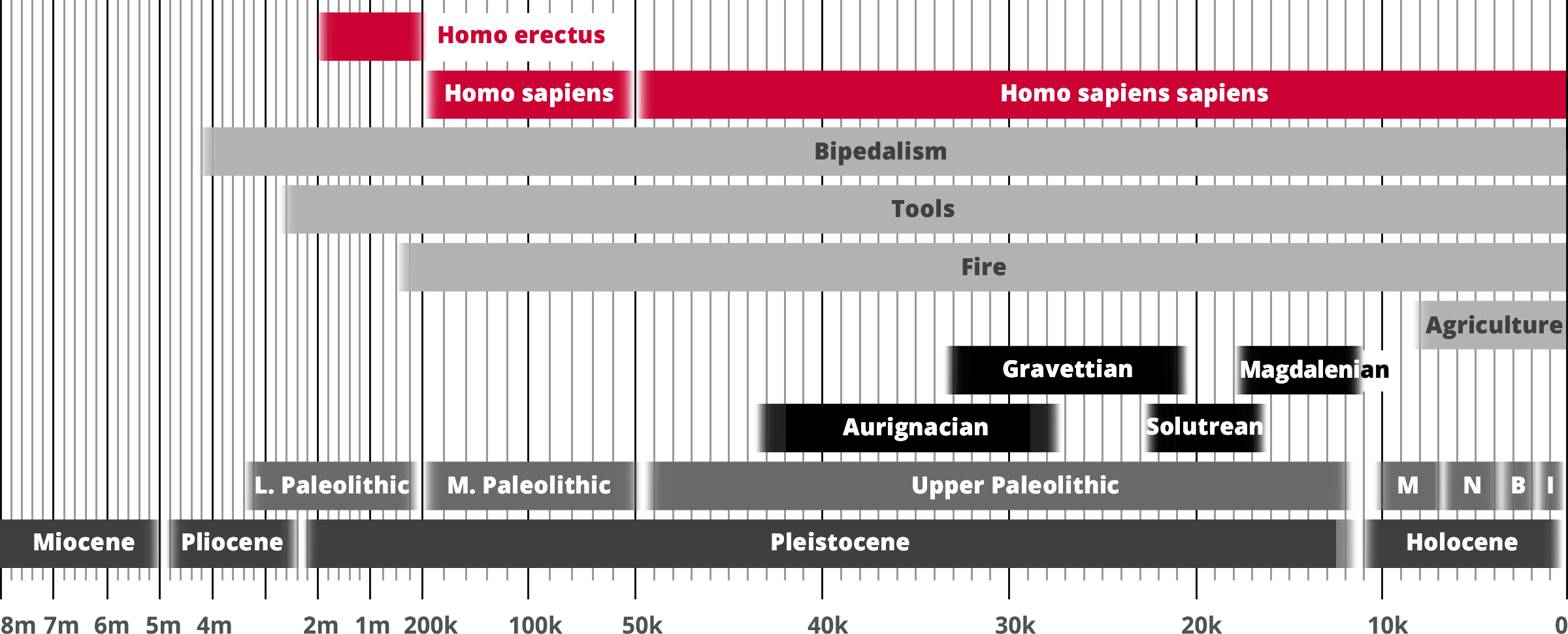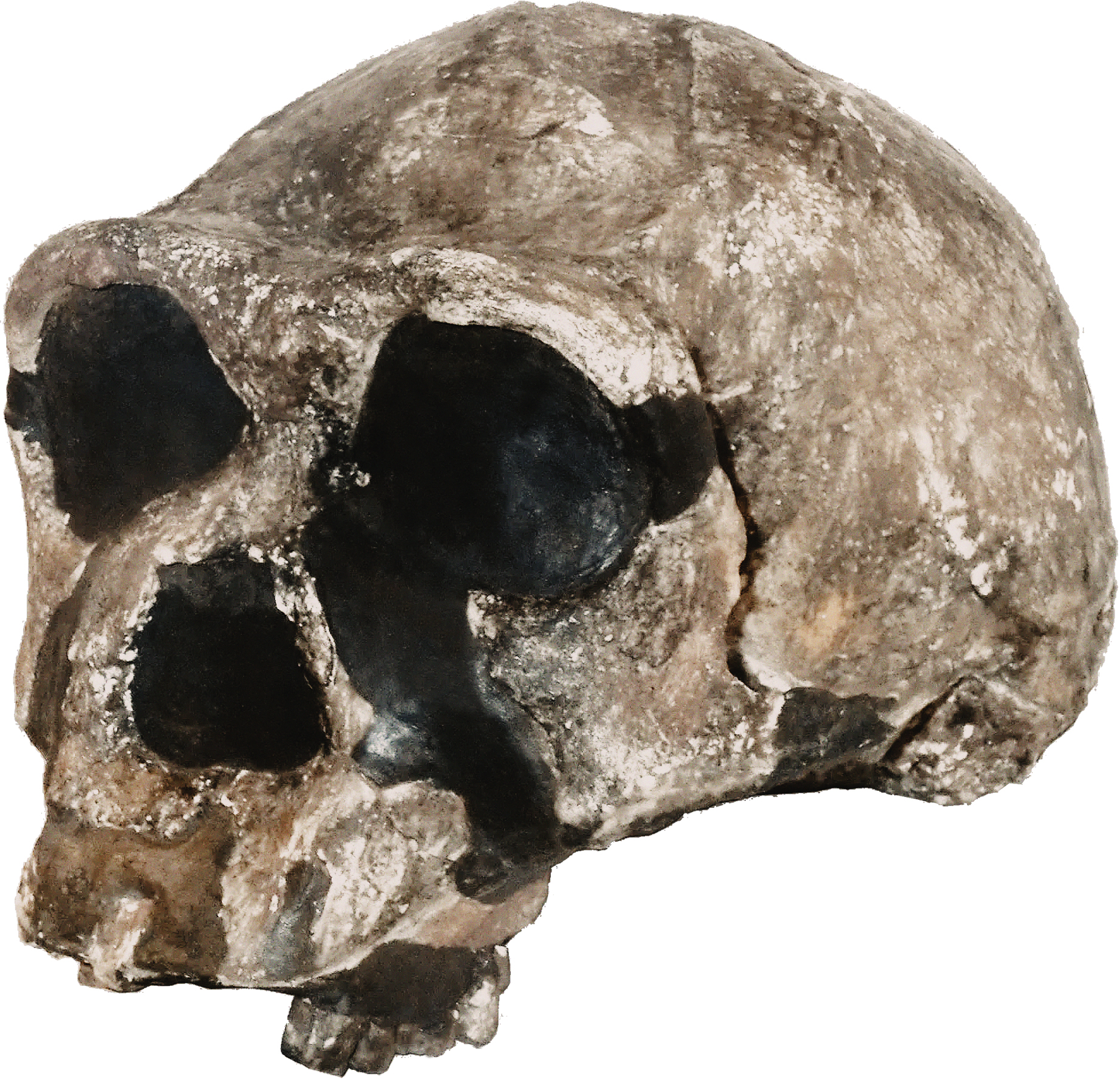Homo erectus
Homo sapiens
Hominin traits
Archaeological industry/Technocomplex including art
Period in human prehistory: M = Mesolithic; N = Neolithic; B = Bronze Age; I = Iron Age;
Geological epoch
* Note: Table based past and current research and scientific consensus
Homo erectus
Homo sapiens
Hominin traits
Archaeological industry/Technocomplex including art
Aur = Aurignacian; Mag = Magdalenian;
Grav = Gravettian; Sol = Solutrean
Period in human prehistory:
M = Mesolithic; N = Neolithic;
B = Bronze Age; I = Iron Age;
Geological epoch
* Note: Table based past and current research
and scientific consensus
Homo erectus, meaning ‘upright man’ is an extinct species of hominid that lived from the end of the Pliocene epoch to the later Pleistocene, with the earliest fossil evidence dating to around 1.9 million years ago and the most recent to approximately 200,000 years ago. The species originated in Africa and migrated as far as India, China and Java. Homo erectus existed longer than any other human species. 'Turkana Boy' and ‘Nariokotome Boy’ are sometimes classified as
Homo ergaster.
| HOMO ERECTUS |
 |
| Genus: |
Homo |
| Species: |
Homo erectus |
| Other Names: |
• Upright Man
• Java Man
• Turkana Boy
• Nariokotome Boy |
| Time Period: |
1.9m to 200,000 years ago |
| Characteristics: |
Tool Maker, Fire User, Proto-language |
| Fossil Evidence: |
• Homo sapiens idaltu (Ethiopia)
• Skhul skull (Israel) |
The classification, ancestry, and progeny of Homo erectus remains controversial, with two major alternative classifications: erectus may be another name for
Homo ergaster, and therefore the direct ancestor of later hominids such as
Homo heidelbergensis,
Homo neanderthalensis and
Homo sapiens. Or it may be an Asian species distinct from African ergaster. In other words,
Homo ergaster may be the African variety of Homo erectus [Antón 2003].
Regarding the origin of Homo erectus there are two theories. The first theory is that Homo erectus migrated from Africa during the Early Pleistocene about 2 million years ago and dispersed throughout the Old World [Afro-Eurasia]. The second theory is that Homo erectus evolved in Asia and then migrated to Africa, indicated by the discoveries on Java ['Java Man'] and at Zhoukoudian in China, as well as the site of
Dmanisi in Georgia, slightly before the earliest evidence in Africa.
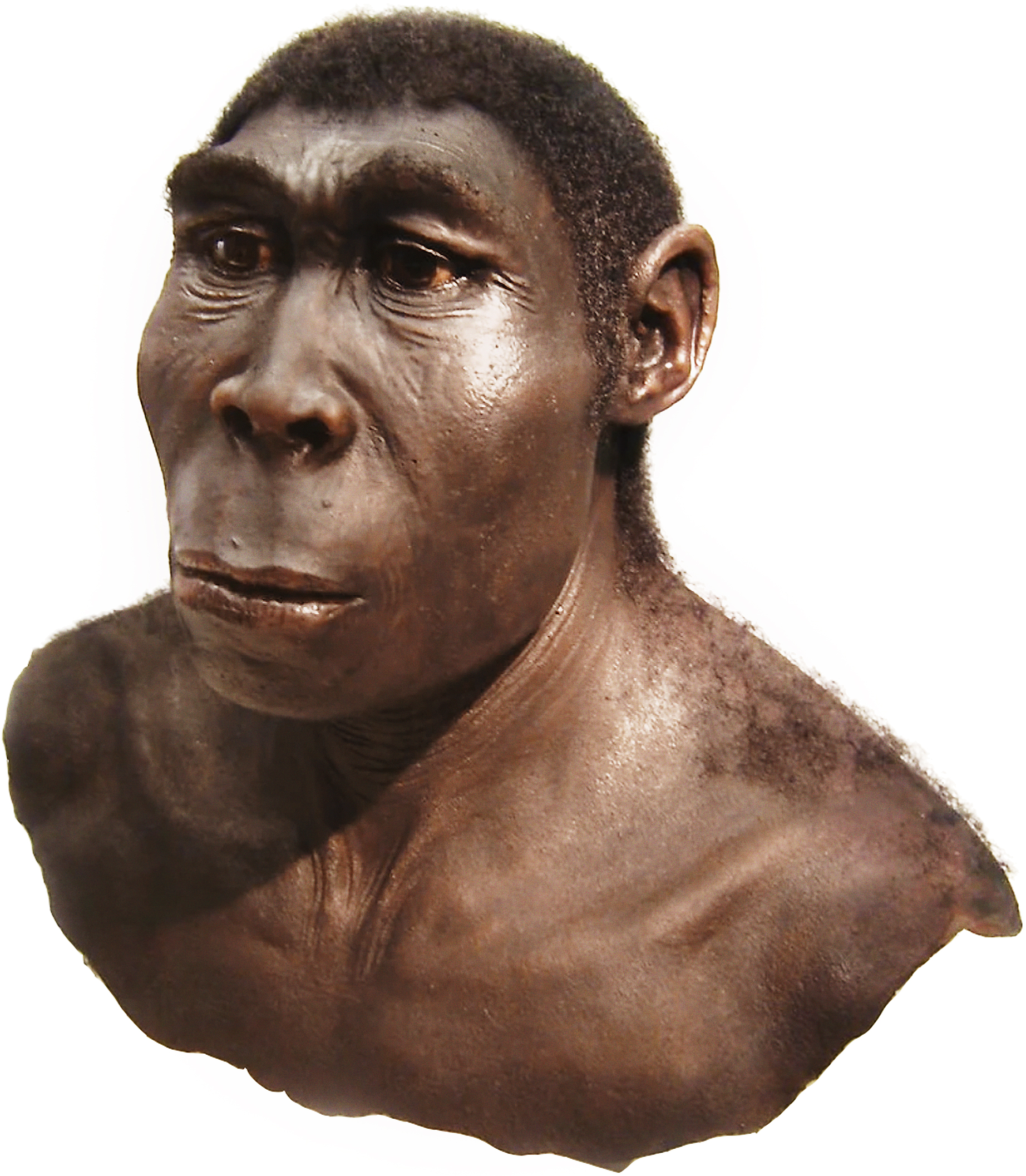
Reconstruction of Homo erectus
Homo erectus appeared almost 2 million years ago at a time when the global climate changed, making Africa drier and more open. This suited Homo erectus , who was agile; the feet were arched for walking and running. Eyes could be trained on a distant target due to the balance provided by the vestibulocochlear apparatus - an organ of balance and movement change, a new anatomical feature similar to that of
modern humans. Homo erectus had little body hair which meant it could shed heat and be active throughout the course of the day. This may have heralded a change from scavenger to hunter. Homo erectus had a smaller gut and smaller teeth than its predecessors, suggesting a better diet. Moreover, there is evidence [bone protein released by hominid fire] to suggest the use of fire to cook food. This would produce a higher-energy diet, reallocating calories, and encouraging brain growth.
This also signified a new form of control - of circumstance and environment; fire could be used cooking, scaring away animals and for warmth.
Homo erectus had a cranial capacity greater than that of
Homo habilis, between 850 cm3 and 1100 cm3, with a frontal bone less sloped, smaller teeth and a face less protrusive than the australopithecines or
Homo habilis. It stood about 1.79 meters tall. The sexual dimorphism between males and females was slightly greater than seen in
Homo sapiens, with males being about 25% larger than females. However, their dimorphism is drastically lesser than that of the earlier australopithecus genus.
Homo erectus used comparatively primitive tools, at a time some 200,000 years before the
Acheulean technology. Thus the Asian migratory descendants of
Homo ergaster made no use of any
Acheulean technology. However, these tools demonstrated a degree of planning, with hand axes fashioned with flaking on 2 sides and a straight edge all the way around. It has been suggested that Homo erectus may have been the first hominid to use rafts to travel [Gibbons 1998]. It lived in a hunter-gatherer society, hunting in co-ordinated groups. It may have used a proto-language, as indicated by the Dmanisi [
Homo erectus georgicus, a sub-species of Homo erectus] vertebrae fossils.

